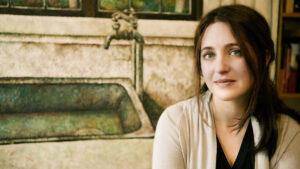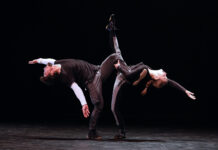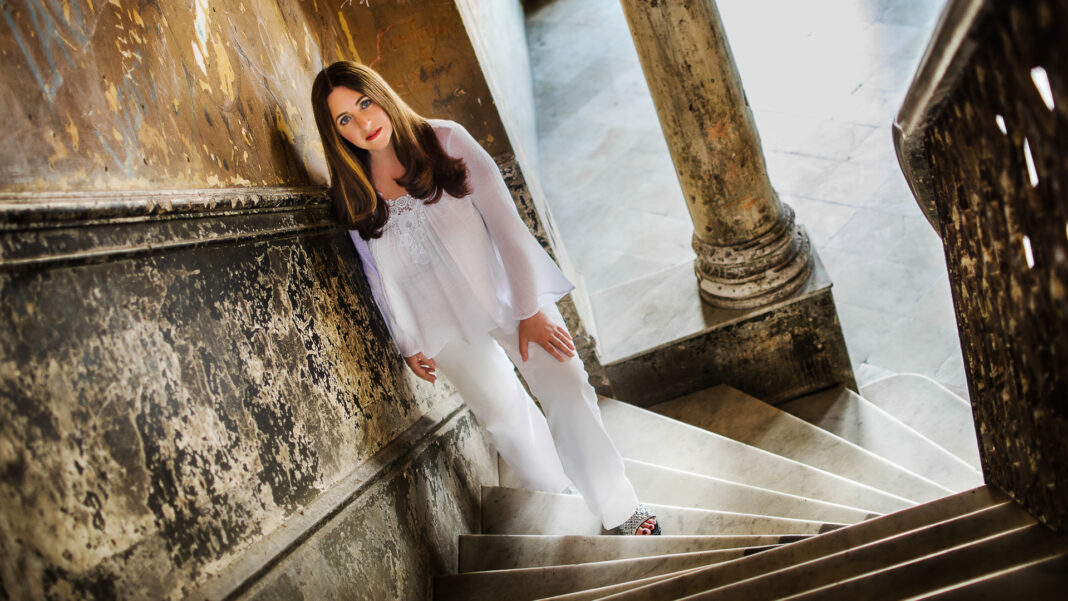
“I really came to a standstill March and April of 2020, and I didn’t want to practice and I didn’t want to play and I didn’t want to listen to music.” The early days of the pandemic did not leave classical pianist Simone Dinnerstein inspired. It took a suggestion by her producer that she make new recordings on the piano in her home to end her lethargy.
The result of that suggestion is a trilogy of albums: A Character of Quiet released in 2020; An American Mosaic released in 2021 and Undersong which was released last Friday.
Composer Richard Danielpour wrote An American Mosaic specifically for Dinnerstein. It’s a beautiful work that runs over 50 minutes and yielded Dinnerstein her first Grammy Award nomination.
She first came to attention for her recordings of Bach’s Goldberg Variations in 2007. Undersong marks her 12th album.
Two weeks ago I spoke via Zoom with Dinnerstein about Undersong, her interpretation of the music of Philip Glass on the album and how she’d like these albums to help ease the pain of living. Her comments have been edited for length and clarity.
Did you set out to record a trilogy? If not, how did this come about?
The first album, A Character of Quiet, that music on that album just really felt like the music that was relevant for me to play at that moment in time, which was in June 2020. Then Richard Danielpour approached me about writing An American Mosaic for me. And the third album, Undersong, came out of an at-home recital that I was doing for Music Worcester, which is this fabulous organization in Worcester, Massachusetts. And so I created an album. I actually recorded the Concert for Music Worcester and the Concert for the Oregon Bach Festival, which was the virtual premiere of An American Mosaic, all of that in one week. I essentially made two albums in one week. That was in November of 2020.
Having not had an interest in playing or hearing music, how did recording these albums impact your relationship with the piano?
I think my relationship has definitely changed. I think it’s hard getting back into the real world. Not that we’re totally back right now, but I have had a crazy fall of performing. Before the fall began I think that this period of time at home that I had – and just working for the recordings and just for myself mainly – made me realize, and I think a lot of people have realized this, that time is time. Our time here is finite and it doesn’t make sense to do things that don’t feel meaningful or that make us unhappy. I just felt that I became much more in touch with the kind of music that I wanted to play, the kind of playing I want to do and the kinds of projects that I find really engaging.
Many of us have had to seek out alternatives to in-person performance as audience members during the pandemic. Did you find yourself discovering or rediscovering new ways to enjoy art or music during this time?
It was the first time in in quite a long time that I started actually sitting down and listening to music at home because I think I felt quite burnt out when I was traveling on the road and all these years of just busting a gut. And so my husband and I invested in a really wonderful LP player and new speakers and we started collecting some vinyl. And it’s a very different form of listening to sit down and listen to records. And so we started having an evening where we would just sit down and listen to a whole record. It was amazing because I haven’t listened to music like that at home and since I was in my early 20s.
Undersong is anchored by Robert Schumann’s Kreisleriana, Op. 16. It’s a romantic work that he personally dedicated to his wife, Clara. As we hopefully start to come out from under the pandemic how does this work speak to you and what we’ve been going through?
There’s something about it that’s truly modern and strange rhythmically; the use of meter, just the sort of displacements of beats. There’s a feeling about it that is not quite settled. It’s also quite influenced by Bach, too. There’s so much counterpoint in it. And all of the music in Kreisleriana has a tendency to kind of circle in on itself. There’s a lot of introspection and quick changes from something very, very agitated to something very still and looking into oneself. I think that all of those qualities are very reflective of the time that we’re in right now because we do feel kind of unsettled and not grounded. And there’s been a very strange feeling about time. Many people talked about they were in an endless loop and feeling like things are getting better and then things are getting worse, and it’s just very, very up and down. I think that Kriesleriana really is such an amazing piece of music and I just feel like it resonates right now.
The album also includes Mad Rush by Philip Glass and the way you play it is distinctly different than the way he performed it on his album Solo Piano. What latitude should a performer have to perform a piece differently than its composer did?
I think that Philip Glass would be the first person to say that the music comes to life in the performance by the performer. He certainly grants that freedom to people that interpret his music.
I think that really great music has a lot in it and a lot of different directions it can go in. It’s the role of the interpreter to look into that music and try to make sense out of it and create a form with it. Maybe what I’m saying is some kind of heresy, but I don’t understand when people think that composers know exactly how their music should be played. And frankly, if I was to hear a composer say that music should be played exactly in one way, I feel like that’s incredibly limiting to their own work.
Schumann, you said, wrote Kreisleriana in four days. What could he have know about all that was included in that work in so short a period of time?
He had very strong opinions about how his music should be played and I’m sure that there are many composers that do have very strong opinions about it. Playing Kreisleriana in 2020 is a completely different kettle of fish than playing it – when did he write it? 1838, I think so. Even if I was playing a piece of music that somebody wrote just the other day like Richard Danielpour almost a year ago. He may have a very strong idea about how it should be played, but it could work in other ways too. Maybe he wouldn’t consider it his approved version, but it still is music that exists and that can exist. I mean, it’s nothing without coming to light, in my opinion.

I want to finish out our time together by asking you about something that Philip Glass wrote in his memoir, Words Without Music. And he said one of Allen Ginsberg’s T-shirts said, “Well, while I’m here, I’ll do the work. And what’s the work? To ease the pain of living. Everything else? Drunken dumbshow.” How does music ease the pain of living for you, and by extension, how would you like this trilogy to help ease the pain of a world in which we live in today?
That’s a heavy question. I get a lot of really beautiful emails from people who have listened to my recordings and I’ve had different kinds of profound responses to them or life events that have taken place around them – really important things. I think that the music on these three albums is music that, I hope, will make the listeners more reflective and create a kind of – I was not going to say framework, I don’t even think framework is the right word – a filter through which to see the world. You know I think that’s what really great art does. All of the music on these albums is just like the best music. And I hope that it will give people that kind of reflection and peace and understanding.
To see my full interview with Simone Dinnerstein, please go here to our YouTube channel.
Dinnerstein is currently on tour and has performances at the Meany Center for the Performing Arts on January 27th; Chamber Music Monterey Bay on January 29th; Broward Center for the Performing Arts on February 8th; Kennedy Center for the Performing Arts on February 28th; Longwood Gardens on March 3rd; McCarter Theatre Center on March 11th; Dance Cleveland on March 19th; Green Music Center on March 25th; The Broad Stage on March 27th and Miller Theater at Columbia University on March 31st. For her complete schedule, please go here.
Photo of Simone Dinnerstein by Arianna Dominguez











